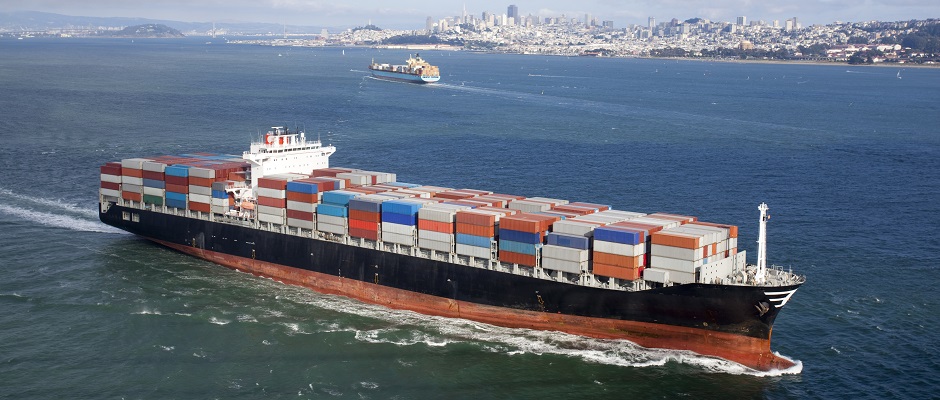Marine engines
OEMs outline challenges ahead
08 December 2025
Please note this article was published in September 2013 and the facts and opinions expressed may no longer be valid.
01 September 2013
IMO pushes Tier III NOx emission limits for ships out to 2021

Insight looks at the amendments to the MARPOL Annex VI regulation which will postpone the implementation of Tier III NOx standards from 2016 to 2021.
At the IMO marine environment Protection Committee (mPeC) session in may, the Committee made significant progress in its work to develop energy efficiency regulations and reduce greenhouse gas emissions from ships.
However, at the same meeting, it also agreed to amendments to the MARPOL Annex VI regulation 13 on Nitrogen Oxides (NOx), which will postpone the implementation of Tier III standards of 3.4 g/kwh within emission control areas (ECAs) from 2016 to 2021.
The call to postpone was driven by claims that imposing the standard in 2016 would be very costly for ship operators, that the technology still has issues, and that it might increase carbon dioxide emissions. Despite significant opposition, the decision to delay was passed by a marginal majority – although this will be voted on again in the next MPEC expected in March 2014.
OEMs now have five more years to develop, test and implement the technology required to meet tier III limits
In Europe, environmental NGOs, including Transport & Environment and Seas at Risk, condemned the decision, and are now calling on the European Union to adopt unilateral NOx limits for cleaner air.
In North America, although national regulations have been adopted that enforce IMO Tier III equivalent limits in the ECA from 2016, if the IMO emission standards are delayed they would only apply for US flagged vessels. In Canada the regulation incorporates a ‘Change of date’ clause that aligns the Tier III deadline with that of the IMO.

ECAs, designed to introduce tighter emissions limits at an accelerated timetable, have already been implemented in coastal waters in several parts of the world. Currently in Europe, ECAs that control sulphur levels are in place in The Baltic and North Seas and the English Channel. In North America ECAs cover waters adjacent to the Pacific coast,the Atlantic/Gulf coast and the eight main Hawaiian Islands – extending for up to 200 nautical miles.
These North American ECAs control sulphur, NOx and particulate matter (PM) and the EPA is continuing to investigate whether other areas of the United States and its territories may benefit from ECA designation.
In the near future we expect ECAs to spread into Japan, the rest of Europe, Australia and Tokyo Bay, and for more of them to control NOx and PM.
NOx emissions limits apply to installed marine diesel engines of over 130 kW output power, and different levels or ‘Tiers’ of control apply based on the construction date of the ship. OEMs now have five more years to develop, test and implement the technology required to meet Tier III limits.
Because no single technology will be able to achieve the massive emission reduction necessary to meet Tier III, it is increasingly important to develop joint hardware and technology systems.
Aftertreatment systems, such as selective catalyst reduction (SCR) and exhaust gas recirculation (EGR), will be required. Although these technologies have been tried and tested in the automotive world, the sheer size of marine engines means their introduction is unlikely to be straightforward.
OEMs are evaluating a wide variety of Tier III NOx solutions, and it is too early to predict which will be the most widely adopted. The impact on fuel consumption is likely to be a key factor for success – especially as fuel costs represent such a high proportion of total operating costs, and as CO2 emissions regulations come into force. The quest for reduced emissions will result in significant change to marine hardware and ship operation, which in turn will impact the formulation of marine lubricants.
New additive components may need to be developed and carefully formulated to provide harms free additive package solutions. However, the extensive bench, engine and field testing involved in the approval of a marine lubricant makes it a long and expensive process. This means it is becoming increasingly important for OEMs, ship operators, fuel, lubricant and additive companies to work together on the co-development of innovative solutions to meet the regulatory challenges ahead.
IMO – The International Maritime Organization is the United Nations specialised agency with responsibility for the safety and security of shipping and the prevention of marine pollution by ships.
MARPOL – The International Convention for the Prevention of Marine Pollution from Ships (MARPOL) Annex VI - Regulations for the Prevention of Air Pollution from Ships entered into force in May 2005 and has been ratified by 53 countries, representing over 80% of the gross tonnage of the world’s merchant shipping fleet.
NGO – Non-governmental organizations (NGO) are non-profit, voluntary citizens’ groups, which perform a variety of service and humanitarian functions, bring citizen concerns to Governments, advocate and monitor policies and encourage political participation through provision of information.
Sign up to receive monthly updates via email
